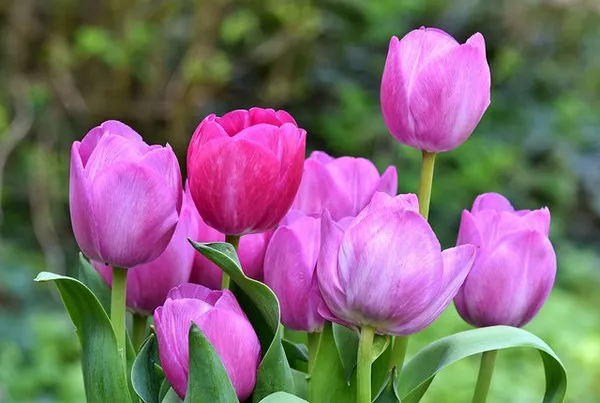Throughout history, flowers have held significant symbolic meanings in various cultures and societies. Among these, the tulip stands out as a symbol of profound cultural, historical, and emotional significance. Originating from Central Asia and later cultivated in the Ottoman Empire, the tulip has captured the hearts and minds of people worldwide with its vibrant colors and graceful form. In this article, we delve into the rich symbolism of the tulip flower, exploring its diverse meanings across different cultures and contexts.
Historical Roots: From Empires to Enlightenment
The tulip’s journey as a symbol begins in the ancient civilizations of Persia and Turkey, where it was revered for its beauty and elegance. In the Ottoman Empire, the tulip became synonymous with luxury and refinement, adorning the gardens and palaces of sultans and nobles. Its popularity soared during the Tulip Era in the 18th century, a period of cultural flourishing and artistic innovation in Ottoman society.
During this time, the tulip also found its way to Europe, where it captivated the imaginations of artists, poets, and botanists. In the Netherlands, the tulip became a national symbol, leading to the famous Dutch Tulip Mania of the 17th century, when tulip bulbs were traded at exorbitant prices, sparking a speculative frenzy. Despite the eventual collapse of the tulip market, the flower remained an enduring emblem of prosperity and cultural heritage in the Netherlands.
A Tapestry of Meanings: Symbolism Across Cultures
The tulip’s symbolism transcends geographical boundaries, carrying different meanings in various cultures around the world. In Persian culture, the tulip symbolizes love and fertility, often associated with the legendary tales of Persian poets such as Rumi and Hafez. Similarly, in Turkish folklore, the red tulip represents undying love and passion, while the white tulip symbolizes purity and forgiveness.
In Western societies, the tulip is often associated with themes of beauty, elegance, and abundance. During the Victorian era, the language of flowers, or floriography, was popularized, with each flower carrying its own symbolic significance. The tulip, with its diverse colors and graceful petals, was used to convey messages of love, affection, and admiration in Victorian flower arrangements and bouquets.
Emblem of Renewal and Rebirth
One of the most enduring symbols associated with the tulip is that of renewal and rebirth. As a perennial flower, the tulip emerges from the ground each spring, bursting forth in a riot of colors after the long winter months. This cycle of growth and renewal has led the tulip to become a symbol of resilience and optimism, inspiring hope for the future.
In Persian New Year celebrations, known as Nowruz, the tulip plays a central role as a symbol of the arrival of spring and the renewal of nature. Similarly, in Christian symbolism, the tulip is often associated with Easter and the resurrection of Jesus Christ, signifying hope and new beginnings.
Expressing Emotions: The Language of Tulips
In addition to its cultural and historical significance, the tulip is also prized for its ability to express a wide range of emotions and sentiments. Each color of the tulip carries its own symbolic meaning, allowing individuals to convey specific messages through floral arrangements and gifts.
Red tulips are often associated with passionate love and romance, making them popular choices for Valentine’s Day bouquets and anniversary gifts.
Yellow tulips symbolize happiness, joy, and cheerful thoughts, making them ideal gifts for friends and loved ones.
White tulips represent purity, innocence, and forgiveness, making them appropriate for occasions such as weddings and apologies.
Purple tulips are associated with royalty, elegance, and admiration, making them perfect for expressing admiration and respect.
Conclusion
In conclusion, the tulip flower continues to captivate and inspire people around the world with its timeless beauty and rich symbolism. From its origins in ancient Persia to its prominence in Ottoman gardens and Dutch tulip fields, the tulip has woven itself into the tapestry of human culture and history.
Whether as a symbol of love and passion, renewal and rebirth, or simply as a gesture of appreciation and admiration, the tulip remains a beloved flower with a profound significance that transcends borders and generations. As we admire the delicate petals and vibrant hues of the tulip, let us also reflect on the deeper meanings it carries, reminding us of the enduring power of nature and the human spirit.


